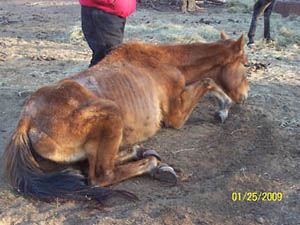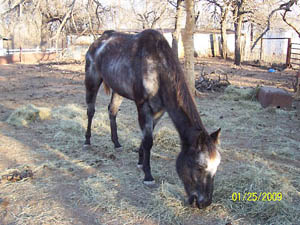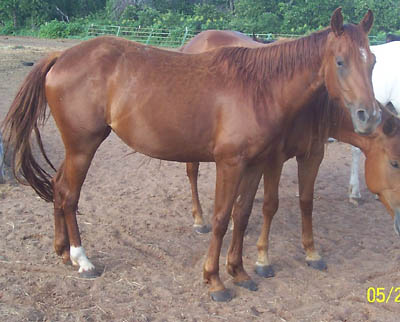If you have read our newsletters before you know we are about how to protect you and your horses from disaster. We have lived through at least one. You can still see our barn pictures from last summer. And we feel everyone is better to at least think about these different possibilities before these things happen. Happy reading!
Strategies to Prevent and Respond to Barn Fires
At the 2008 American Association of Equine Practitioners convention, held Dec. 6-10 in San Diego, Calif., Rebecca Gimenez, PhD, noted that barn fires are the No. 1 local emergency that affects everyone from horse owners to veterinarians, and property owners to the horses themselves. Barn fires kill more horses annually than any other type of nonmedical emergency. Of 11,500 agricultural storage facility fires per year, 88% are barns or stables with animals, resulting in about $250 million in property losses annually. In 87 horse-barn fire incidents reported in 2006 and 2007, 461 horses died and an unknown number were injured. Read More…
MRSA More Common in Horse People
Methicillin-resistant Staphylococcus aureus (MRSA) bacterial infections have become hot news lately, especially among horse people. This topic likely won’t die down soon because recent research shows that MRSA is up to 10 times more common in equine veterinarians than in the general population–and that it can spread from horses to humans. “MRSA appears to be an occupational risk factor for large animal veterinarians,” noted Maureen Anderson, DVM, DVSc, postdoctoral fellow in the Department of Pathobiology of the University of Guelph in Ontario, Canada. Read More…
Managing Horses in Icy Conditions
Ice is an unavoidable part of winter in many parts of the world, but there are ways to minimize slipping incidents around the barn. Heather Sherratt knows something about keeping horses in icy conditions. Her farm, Elphin Mountain Connemaras, near Ottawa, Canada, was hit hard by the 1998 ice storm that caused weeks-long power outages and several deaths in Canada and parts of the northeastern United States. “My ponies are barefoot, and that helps,” she said. If going barefoot over the winter isn’t an option, farrier Pat Sweeney of Mandan, N.D., recommends applying borium to shoes to increase their grip. Sweeney also said that snowball pads and rubberized rim pads will help keep snow from packing into the foot. Read More…
Hope you enjoyed reading more about horses in the news! Have a great weekend and look for our full newsletter soon! You can also sign up for our newsletter below and receive it from our aweber service!
Happy Trails!
Deb and Rick Stowers Sierra Ranch deb@sierraranchok.com www.sierraranchok.com www.sierraranchok.net











 This are a pictures of Bubba from last summer. I have not had time to post, but Bubba was given a reprive from Rick. He will get to stay at our house and is learning to not chew quite so much. And his humans are learning to put things up.
This are a pictures of Bubba from last summer. I have not had time to post, but Bubba was given a reprive from Rick. He will get to stay at our house and is learning to not chew quite so much. And his humans are learning to put things up.